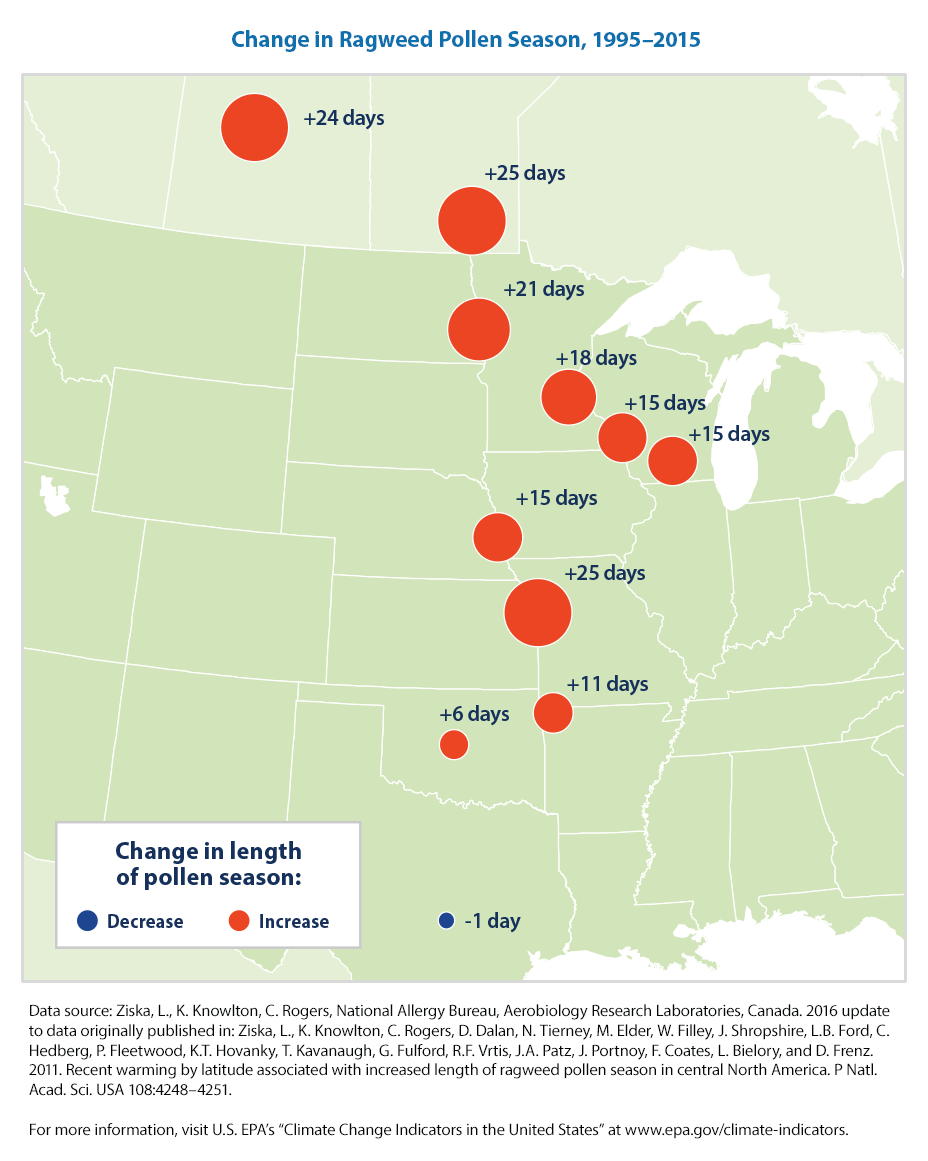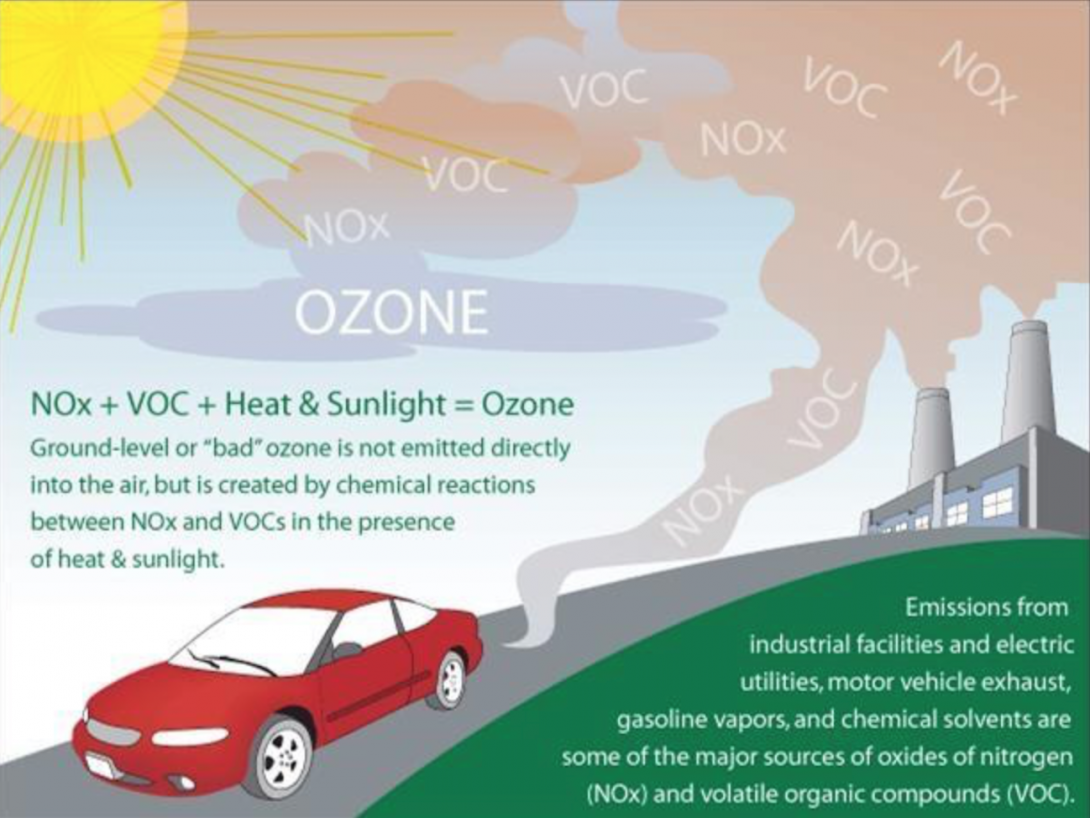Asthma and Allergies
Ragweed Pollen Season
Pollen and ragweed season can make breathing difficult for people with allergies, hay fever, asthma, and other respiratory health conditions and the ragweed season in the United States is getting longer. This is another way scientists determine if climate change is happening. The image at the right shows that between 1995 and 2015, the ragweed season has grown longer in 10 of the 11 locations studied. Red circles represent a longer pollen season; the blue circle represents a shorter season. Larger circles indicate larger changes. The longer seasons are strongly connected to the fact that temperatures are rising. Higher temperatures are changing the length of our seasons. Fall is lasting longer, spring is happening earlier, and the first day of frost is happening later than they used to. There is also more rain. Plants that produce pollen, like ragweed plants, grow in abundance in longer growing seasons and more rain. Citation: EPA
Ragweed Pollen Season Image

EPA Ragweed Pollen Map
Ozone Pollution
Warmer temperatures will also make ozone pollution worse. The image to the right shows how ozone pollution is made. Ozone pollution is the main ingredient in ‘smog’ and it is created by the combination of burning fossil fuels, (like car exhaust and power plant smokestacks) and heat. Rising temperatures will make ozone pollution worse. Ozone pollution can make breathing harder for people with asthma, emphysema, and other lung health problems. You can check out the quality of your air on a daily basis on EPA’s Air Quality Index. People with heart and lung problems should stay inside and in cool places on days when the air quality is bad. Citation: EPA
Ozone Image

EPA AirNow Ozone Air Quality